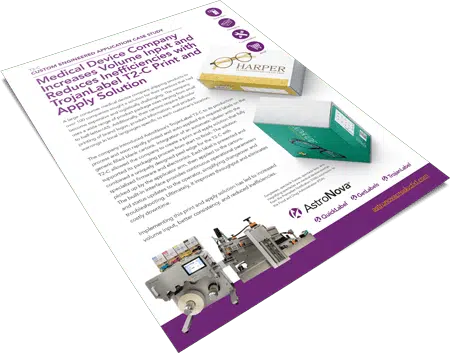
The medical devices market is booming, driven by increasing patient needs, advancements in procedures and technology, healthcare-related expenditures, and regulatory support. The global value, estimated at $542.2 billion, is expected to grow to $886.8 billion by 2032. The impact on packaging providers is dramatic. Yet, despite competition surging globally, the opportunities for providers are clear: The global medical device packaging market will nearly double from $12.4 billion to $20.9 billion by 2033.
Thus, efficiency and precision are critical in the fast-paced world of medical device manufacturing.
Any hiccup throughout production can lead to delays, increased costs, and potential errors that could, very literally, impact patient safety.
Ensuring correct packaging is crucial for medical device companies for a variety of factors:
- Patient Safety: Proper packaging ensures that shipped and stored medical devices remain sterile and undamaged until they reach and are ready for use by the end user. Any compromise in packaging could lead to contamination or damage — exposing patients to potentially serious safety risks during procedures or treatments.
- Regulatory Compliance: Regulatory bodies such as the U.S. Food and Drug Administration (FDA) and the European Medicines Agency (EMA) have stringent requirements for medical device packaging. If a company is found to be non-compliant, the results can include regulatory actions, product recalls, fines, or even legal consequences.
- Product Integrity: Medical devices often have intricate components — that must remain undamaged and completely functional. Correct packaging protects the device and its components from external factors such as moisture, temperature change, and physical impact to protect the device and its full operational performance.
- Brand Reputation: A medical device manufacturer’s reputation relies on the quality and reliability of its products. Inadequate packaging that leads to sterility issues or failure in use can damage or destroy its reputation and trust among healthcare professionals and patients.
- Supply Chain Efficiency: Efficient packaging design can streamline the supply chain process, reduce costs, and ensure timely delivery. Incorrect packaging, excessive, oversized, or poorly designed, can lead to logistical challenges and delays.
- Liability Risks: If a packaging issue is found to be the cause of the failure of a medical device, and ultimately causes patient harm, the manufacturer may face both legal and civil liabilities. Companies can mitigate such risks by ensuring that their package design and production are undertaken with all required due diligence in product safety and quality control.
The challenges for one prominent medical device company were serious and extensive.
Being able to fulfill the diverse packaging needs of more than 100 clients in multiple geographic regions was a considerable enough challenge. However, the uniqueness of each order complicates attempts to reconcile a solution exponentially. The situation was increasingly expensive, time-consuming, and a logistical nightmare.
The company faced not only customer orders demanding various package sizes — ranging from small to half-letter/A5 — but mounting customization requirements for full-color printing of logos, product details, and warnings in multiple languages specific to each client’s region.
Seeking a solution to streamline their packaging operations, the company turned to AstroNova.
AstroNova introduced its T2-C label press into the company’s product line as the cornerstone of the solution. The T2-C is the first-ever high-capacity, high-volume tabletop label press capable of consistently delivering precision over long runs in 24/7 production.
The versatile T2-C quickly generated labels and automatically applied them to blank cartons, enhancing the packaging process from start to finish. The solution featured a specially designed peel edge for the T2-C, alongside tailored firmware and electronics, ensuring smooth label application.
With a user-friendly interface providing real-time operational updates and facilitating troubleshooting, the system significantly improved efficiency, minimizing downtime and simplifying changeovers.
The T2-C was integrated with an automatic labeler. A uniquely designed peel edge for the T2-C with specialized firmware and electronics further enhanced the solution. The result entirely transformed the company’s packaging process with a customized print and apply solution. Now, after each label is presented and picked up by the applicator arm, it is applied to the cartons. An operator-friendly built-in interface now provides continuous operational parameters and status updates and simplifies changeover and any needed troubleshooting.
As a result of implementing the new in-house print-and-apply labeling solution, the medical device company experienced reduced its previous challenges and inefficiencies to increase productivity and achieve the much-sought-after consistency in its operations.




